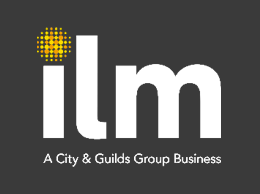As organisations look toward 2026, one thing is clear: learning and development can no longer be reactive. Rapid technological change, evolving employee expectations, and increasing skills gaps mean that organisations must plan their L&D strategy with intention and foresight. Those that invest early and strategically will be far better positioned to adapt, compete, and retain talent in the years ahead.
The pace of change is accelerating
Automation, AI, and digital transformation continue to reshape roles across every industry. Skills that were once considered optional are quickly becoming essential, while others are becoming obsolete. Planning your L&D strategy now allows you to anticipate these shifts rather than scramble to respond to them. A forward-looking approach ensures your workforce is continuously building the capabilities needed for future roles, not just current ones.
Skills gaps won’t fix themselves
Many organisations already face critical skills shortages, particularly in leadership, digital literacy, data analysis, and change management. Without a structured L&D plan, these gaps tend to widen over time. By mapping current capabilities against future business goals for 2026, organisations can identify priority areas for development and invest in targeted learning initiatives that deliver measurable impact.
Employee expectations are evolving
Today’s employees expect more than occasional training sessions. They want personalised, flexible, and meaningful development opportunities that support both career progression and personal growth. A well-planned L&D strategy signals that your organisation is committed to its people. This not only improves engagement and performance but also strengthens retention in an increasingly competitive talent market.
Alignment with business strategy is critical
L&D is most effective when it directly supports organisational objectives. Planning for 2026 allows learning leaders to align development initiatives with long-term business priorities, such as market expansion, innovation, or cultural transformation. When learning is clearly linked to strategic outcomes, it is easier to secure leadership buy-in, allocate budgets effectively, and demonstrate return on investment.
Budgeting and resources require foresight
Effective learning takes time, money, and the right tools. Waiting until skills gaps become urgent often leads to rushed decisions, higher costs, and inconsistent results. A planned L&D strategy enables smarter budgeting, better vendor selection, and the opportunity to pilot and refine programmes before scaling them across the organisation.
Building a culture of continuous learning
Perhaps most importantly, planning your L&D strategy for 2026 helps embed learning into the fabric of your organisation. Rather than being seen as a one-off activity, development becomes an ongoing process that supports adaptability and resilience. In uncertain times, organisations with strong learning cultures are better equipped to navigate change and seize new opportunities.
In short, planning your learning and development strategy for 2026 is not just a “nice to have” — it is a business imperative. By acting now, organisations can Futureproof their workforce, empower their people, and ensure they are ready for whatever lies ahead.
Get in touch at info@futureproof-training.co.uk to discuss your 2026 requirements with on of our L&D Project Managers.






